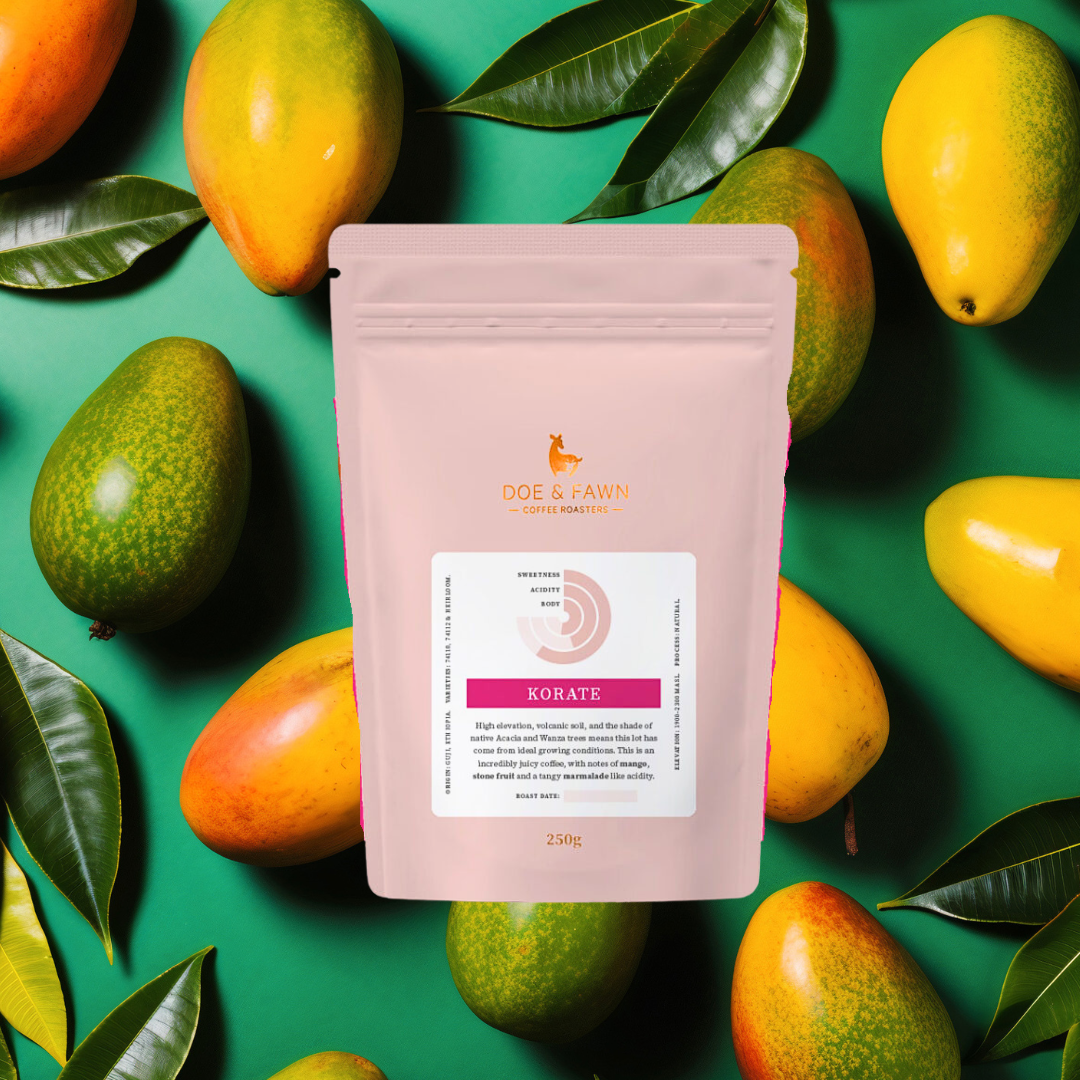Doe & Fawn Korate - Guji/Ethiopia
Origin
Guji, Ethiopia
Variety
74110,74112 & Heirloom
Processing
Natural
Altitude
1900-2300 masl
Roast Profile
Omni-roast
Carringtons
Notes of Mango, Stone Fruit
Coffee Facts
High elevation, volcanic soil, and the shade of native Acacia and Wanza trees means this lot has come from ideal growing conditions. This is an incredibly juicy coffee, with notes of Mango, Stone Fruit and a tangy marmalade like acidity.
Buno was established in 2018 and is managed by Mr.Abiyot who oversees the selection of partner farmers, the processing of cherry and the drying practices. Buno is focused on working with farmers with between 8-15 hectares of land which makes quality improvements easier to manage and ensures that produced volumes of cherry can be separated into single producer micro-lots. To ensure that farmers wait to pick only fully ripened cherries, Buno pays farmers a premium of one birr for every kilo delivered after the harvest. Additionally, Buno provides a credit line to farmers during the off-season for harvest related expenses. The loan is then deducted from their payment upon cherry selection, interest free.
The cherry selection we have witnessed at Buno’s sites are by far the best we have seen in Ethiopia. One of Buno’s sites, Dikitu, has 120 raised beds which is are exclusively for processing natural coffees.
9 farmers contributed to this lot who, on average, have farms 6 hectares in size. The farmgate price paid to them for their coffee was 65-70 Ethiopian Birr per kg of cherry.
Coffee in this area grows under a canopy of native shade trees such as acacia and wanza. The local soil is volcanic fertile red soil and deep sandy loam.
This lot has been process as a traditional natural, then cherry are received and floated to remove immature, overripe and floaters, once this process is complete the coffee is simply laid on raised beds to dry for up to 35 days days depending on weather conditions, at first the coffee is spread as thin as a single cherry to promote even drying and avoid any mould formation, the cherries are than gradually stacked up on thicker layers as those are getting drier.



